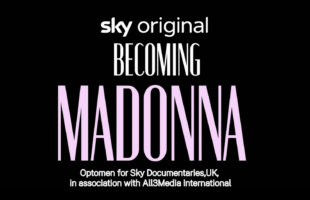“The Formats Futures Report: A global perspective on the booming formats community,” was held on 30 March, 2012, at MIPFormats in Cannes.
David Jenkinson, Editor-in-Chief & Managing Director of C21 Media, opened the session by summarising the findings of the latest C21 Formats Report. The report combined the findings from a mass survey (which drew a modest 172 respondents) with Schedule Watch, a staple strand on C21.
Highlights from the report:
“Game shows do seem to be back in fashion… Cooking is not on the way out… Casting and Character-driven formats remain strong… There hasn’t been any truly original format.”
“The business is looking backwards to go forwards. The risk-averse are looking for triedand- tested formats to reinvent.”
Following the announcement of the survey findings, the panel of five shared their thoughts.
Lars Beckung, Programme Director of Kanal 5, Sweden, questioned whether producers can or should tap into the “second screen” when designing formats.
On creating “global brands,” Wayne Garvie, Managing Director, International Production at All3Media, cited the example of BBC’s Top Gear as a format that was not a ratings frontrunner but a brand that not only travels, but one that could secure sponsors to fund the format.
Karoline Spodsberg, Managing Director of Banijay International, shared that format genres have merged and that it becomes increasingly difficult to categorise some formats into specific genre “types.” She suggests that producers are better off focusing their energies on defining the target audience rather than nailing that genre “type.”
On the subject of “branded entertainment,” CEO of RelativityREAL Tom Forman cautions against sacrificing an idea or concept for a brand. The reality, as Forman mentions, is that many brands want a level of control (over content) and often disallow producers and broadcasters from further exploiting the formats at international markets.
When that happens, the programme becomes less of a format that can be replicated. One success though, Forman claims, is Endemol’s Extreme Makeover: Home Edition; a format heavy with brand acknowledgements. Forman served as producer/ creator of the award-winning show, which ran nine seasons.
The Kardashians was cited as an example of “constructed reality,” where “you put unknown people in a show and they become a brand,” said Garvie. As with The Kardashians, Garvie asks broadcasters to hold on to the brand for as long as possible so as to further exploit the brand. Many in the now-famous Kardashian clan have successfully created their own spinoffs – a testament to the power of the Kardashian “brand.”
Spodsberg agrees, and emphasises the importance for networks to seize control in the constructed reality genre. Then, the network will be able to dictate WHAT the target audience is watching and WHERE they are going to watch it.
Mike Beale of ITV studios expressed his concerns about the blurring of lines between the “constructed reality” genre and that of a format. Not all programmes centered on the lives of characters can be replicated in other parts of the world.
Forman agrees. He cites the example of History’s Pawn Stars, which has successfully cast characters from a family-run pawnshop to huge ratings success. To call this type of programming a format could be stretching it, unless one can successfully find and cast personalities of similar strength elsewhere.
On what is the “next big thing” in formats, the panel is largely undecided, but it is generally agreed that the viewers’ reactions and feedback would determine the trend. Beckung spoke on a trend of formats that seems to be gaining ground in Scandinavia; what he calls “needsbase” programmes; which are programmes that address social needs and concerns, or those that simply target a need among viewers. D-I-Y shows, he highlights, have done well.
Forman begs to differ, saying that social issues do not make for good television. “We don’t want to be lectured on solar energy. It has to be fun to watch,” explains Forman. However, Forman names the widelysold format Undercover Boss as a successful series that exposes a social ill (bosses who are out of touch with the sufferings of their employees) but was at the same time, tremendously entertaining.
Beckung rounds up the discussion with an optimist outlook about the format business, calling it a “golden year ahead of us; an evolution mix of genres,” but he also throws a word of caution to producers. While acknowledging the potential for greater audience interaction with cross platform initiatives, Beckung reminds the MIP participants present what should matter most.
“It’s tempting to go for a tech-driven show because you can, but a great idea comes first,” said Beckung.
Spodsberg echoes the sentiment. “The first screen is first, however the business may change.”








